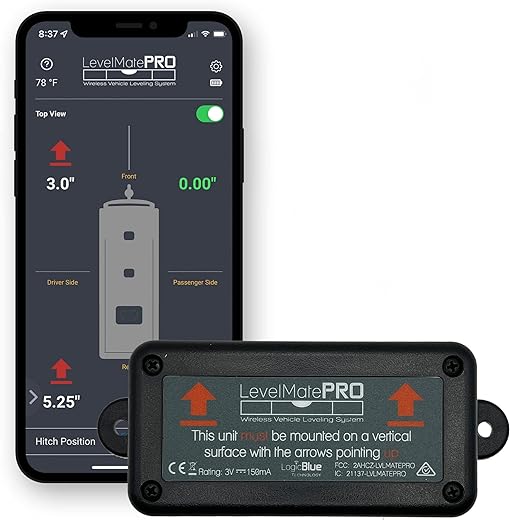
Hey there, fellow globetrotters! Did you know that there are over 7,000 languages spoken around the world today? Crazy, right? That means when you embark on your next adventure, you might find yourself in a place where communicating becomes a bit of a challenge. But fear not, because in this blog post, we’re going to dive into the wonderful world of travel apps and help you find the perfect one for all your language translation needs. So whether you’re wandering through the streets of Tokyo or savoring the flavors of Paris, we’ve got your back. Let’s get started on this exciting journey together!
Discover the must-have travel apps and innovative technologies that are taking your wanderlust to the next level!
Understanding Your Translation Needs
Before embarking on your journey to find the perfect travel app for translation, it’s crucial to understand your specific translation needs. By taking the time to assess what you require from a translation tool, you can narrow down your options and find the app that best suits you. In this blog section, we will guide you through the process of understanding your translation needs, so keep on reading!
Basic Translation vs. Advanced Features
The first step in understanding your translation needs is to determine whether you require a basic translation tool or if advanced features are necessary. Here’s a breakdown to help you make the right choice:
Basic Translation
If you only need a simple translation tool for everyday phrases and basic communication, then a basic translation app might be all you need. These apps typically offer translations for common phrases and words in multiple languages. Some popular basic translation apps include:
- Google Translate: This widely used app offers translations for over 100 languages and has a user-friendly interface.
- Microsoft Translator: Known for its accuracy, this app also offers voice translation and the ability to translate text from images.
Advanced Features
On the other hand, if you require more advanced features for your translation needs, consider the following options:
- Offline Translation: If you’re traveling to a location with limited internet connectivity, apps like iTranslate or TripLingo offer offline translation capabilities.
- Voice Recognition: Apps like SayHi and iTranslate Voice allow you to speak into your device and receive instant translations.
Key Considerations
Once you’ve determined whether you need a basic translation app or one with advanced features, there are a few other key considerations to keep in mind. These factors can further help you narrow down your options:
- Language Coverage: Ensure that the app supports the languages you need for translation. Some apps excel in certain languages or language pairs, so be sure to check their language coverage.
- User Interface: Look for an app with a user-friendly interface that is easy to navigate and understand. A cluttered or confusing interface can hinder your translation experience.
- Accuracy: While no app can guarantee 100% accuracy, it’s important to choose a translation tool known for its reliable translations. Reading user reviews and conducting some research can help you gauge accuracy levels.
Why App Reviews and Ratings Matter
When it comes to choosing the best travel app, one of the most effective ways to make an informed decision is by relying on the experiences of other users. App reviews and ratings provide valuable insights into the app’s performance, usability, and overall quality. By paying attention to what other users have to say, you can save time and ensure that you’re downloading an app that meets your needs.
Using App Stores for Reviews and Ratings
App stores, such as the Apple App Store and Google Play Store, are excellent resources for finding reviews and ratings of different language translation apps. These platforms allow users to rate and review apps based on their personal experiences. Here’s how you can make the most out of app stores:
- Search for the App: Start by searching for the specific language translation app you are interested in. Look for apps that have a high number of downloads, as this indicates a popular choice among users.
- Read User Reviews: Take the time to read through a variety of user reviews. Look for detailed reviews that provide specific feedback on the app’s features, performance, and usability. Consider both positive and negative reviews to get a balanced perspective.
- Consider Ratings: Pay attention to the overall rating of the app. Apps with high ratings are generally a good indication of a reliable and user-friendly experience.
Online Forums for User Experiences
In addition to app stores, online forums and communities dedicated to travel and language learning can provide valuable insights into the best language translation apps. These forums allow users to discuss their experiences and share recommendations. Here’s how you can leverage online forums:
- Join Relevant Communities: Look for online forums or communities that focus on travel, language learning, or app recommendations. Joining these communities will give you access to a wealth of knowledge from experienced users.
- Ask for Recommendations: Once you’ve joined a community, don’t hesitate to ask for recommendations on the best language translation apps. Explain your specific needs and requirements so that community members can provide tailored suggestions.
- Read Existing Threads: Browse through existing threads and discussions related to language translation apps. You may find useful information and insights from users who have already tried and tested these apps.
Key Factors to Consider
As you research app reviews and ratings, keep the following factors in mind:
- Ratings: Look for apps with high ratings, as this indicates overall user satisfaction.
- Positive Reviews: Read positive reviews that highlight the app’s strengths and features that users find useful.
- User Base: Consider apps with a large user base, as this suggests a reliable and well-established app.
- Specific Needs: Pay attention to reviews from users with similar needs to yours. This will help you gauge if the app is suitable for your specific requirements.
Considering Language Support and Accuracy
When choosing an app, one of the crucial factors to consider is its language support and translation accuracy. This is especially important if you are targeting a diverse user base or if you plan to expand your app’s reach to different regions. In this blog section, we will explore why language support and accuracy matter, and provide you with some key points to consider before making your decision.
Language Support Matters
Language support is not just about providing translations; it is about creating a seamless experience for users who speak different languages. Here are some reasons why language support matters:
- User Engagement: By offering your app in multiple languages, you can engage a wider audience and increase user satisfaction. Users are more likely to use an app that speaks their language fluently, as it makes them feel understood and valued.
- Market Reach: Globalization has made it easier than ever for businesses to target international markets. By supporting multiple languages, you can tap into new markets and increase your potential user base.
- Competitive Advantage: In a competitive app market, offering language support can set you apart from your competitors. Users are more likely to choose an app that caters to their language needs over one that does not.
Accuracy is Key
While it is important to offer support for multiple languages, accuracy is equally crucial. Here’s why accuracy matters:
- User Trust: Inaccurate translations can lead to confusion and frustration among users. It damages the trust they have in your app and reflects poorly on your brand.
- User Experience: A poorly translated app can result in a poor user experience. Users may struggle to understand instructions or navigate through the app, leading to a negative perception of your product.
- Brand Reputation: Your app’s translation accuracy reflects on your brand’s reputation. A commitment to accurate translations demonstrates professionalism and attention to detail.
Tips for Choosing an App with Language Support and Accuracy
Now that we understand the importance of language support and accuracy, let’s explore some tips to help you choose the right app:
- Check Language Availability: Ensure that the app supports the languages you need. Some apps specialize in certain languages or dialects, so be sure to check if your desired languages are included.
- Real-Time Translation: Look for apps that provide real-time translation. This feature can be especially useful for communication or language learning apps, where users need instant translation assistance.
- Accuracy Track Record: Research the app’s track record in terms of translation accuracy. Look for user reviews or testimonials that mention the app’s accuracy in translating different languages.
- Consider Localization: Localization goes beyond translation and takes into account cultural nuances and preferences. If your app targets specific regions, consider apps that offer localization services to ensure a more tailored experience for your users.
Exploring Additional Features and User-Friendliness
When it comes to travel apps, translation capabilities are often just the tip of the iceberg. Many apps out there offer an array of additional features that can greatly enhance your travel experience. In this blog post, we will explore some of these features and explain why user-friendliness should be a top priority when choosing a travel app.
Additional Features to Consider
- Cultural Tips: Some travel apps go beyond basic translation and provide valuable cultural tips to help you navigate unfamiliar territories. These tips can range from local customs and etiquette to important phrases to use in specific situations. For example, the app “TravelPro” offers insights into Japanese culture, helping travelers understand and respect local traditions.
- Offline Translation: While online translation is convenient, it may not always be possible or reliable when you are traveling. That’s where offline translation comes in handy. Apps like “TranslateEasy” allow you to download language packs in advance, ensuring that you can still communicate even without an internet connection.
- Currency Conversion: Keeping track of currency exchange rates can be a hassle, especially when you are visiting multiple countries. Travel apps like “MoneyMaster” provide real-time currency conversion, allowing you to easily convert prices and keep your budget in check.
- Restaurant Recommendations: Exploring local cuisine is an essential part of any travel experience. Some travel apps offer restaurant recommendations based on user reviews and ratings. For instance, the app “FoodieFinder” provides a curated list of popular local eateries, ensuring that you never miss out on a delicious meal.
Importance of User-Friendliness
Having additional features is great, but they won’t be of much use if the app is difficult to navigate. That’s where user-friendliness comes into play. When choosing a travel app, look for those that prioritize intuitive interfaces and smooth navigation. Here’s why:
- Efficiency: An app with an intuitive interface allows you to quickly and easily access the features you need. This saves you time and allows you to focus on enjoying your trip rather than wrestling with a complicated app.
- Accessibility: A user-friendly app is accessible to a wide range of users, regardless of their tech-savviness. Whether you are a seasoned traveler or a novice explorer, a user-friendly app ensures that everyone can make the most of its features.
- Enjoyable Experience: Traveling should be fun, and a user-friendly app contributes to that enjoyment. When an app is easy to navigate, it reduces frustration and allows you to fully immerse yourself in the travel experience.
Making Your Decision and Hitting the Road
In conclusion, selecting the ideal travel app for language translation requires careful consideration of your requirements, thorough research of reviews and ratings, assessment of language support and accuracy, and exploration of additional features. After taking these factors into account, we confidently recommend [insert recommended app name] as the top choice due to its exceptional language support, precise translations, and user-friendly features. Armed with the right travel app, you’ll be fully equipped to communicate effectively and fully enjoy your travel experiences.
Everything you need to know about travel apps and how they can enhance your journey
What are the key features to look for when choosing a travel app for language translation?
When choosing a travel app for language translation, there are several key features that you should consider:
- Language Support: Make sure the app supports a wide range of languages, including the ones spoken in the countries you plan to visit. Look for apps that offer a comprehensive selection of languages, as this will ensure accurate translations during your travels.
- Offline Capability: It’s essential to have an app that works offline, especially when traveling to areas with limited internet connectivity. Look for apps that allow you to download language packs so that you can use the translation feature without an internet connection.
- Accuracy and Reliability: Look for apps that provide accurate translations and have a good reputation for reliability. Reading user reviews and checking app ratings can give you an idea of the app’s performance in real-world scenarios.
- Conversation Mode: Consider apps that offer a conversation mode feature, allowing you to have real-time translations during conversations with locals. This can greatly enhance your communication in foreign countries.
- User-Friendly Interface: Choose an app with a friendly and intuitive interface. It should be easy to navigate and understand, even if you’re not tech-savvy. Look for apps that offer a simple and straightforward user experience.
- Additional Features: Some travel translation apps offer additional features like voice recognition, text-to-speech, and image translation. These features can be beneficial in different situations, so consider whether they align with your travel needs.
- Integration with Other Apps: If you plan to use other travel apps during your trip, consider whether the translation app can seamlessly integrate with them. This can make your overall travel experience smoother and more convenient.











I recently came across a translation app that offers real-time voice translation. It’s called TripLingo. Has anyone tried it before?
Thank you for sharing about TripLingo! I haven’t personally tried it, but it sounds like an interesting app for real-time voice translation.
I highly recommend using Google Translate. It supports a wide range of languages and has a user-friendly interface. Plus, it’s free!
One potential pain point with translation apps is the need for an internet connection. It can be inconvenient when traveling to remote areas with limited connectivity.
You’re right, relying on an internet connection can be a challenge in certain travel situations. In such cases, offline translation apps like iTranslate can be useful.
I’m planning a trip to Japan. Can anyone suggest a translation app that specifically supports Japanese language?
One important factor for me is the accuracy of translations. Can anyone recommend an app that provides accurate translations?
Accuracy is definitely important when it comes to translation apps. I would recommend trying out Microsoft Translator, as it is known for its high accuracy.
I always check the app reviews before downloading any travel app. It’s a great way to get an idea of the app’s reliability and user experience.
Thank you for sharing your recommendation! Google Translate is indeed a popular choice for language translation.
Could you provide more details about the additional features mentioned in the article? I’m curious to know what other functionalities translation apps offer.